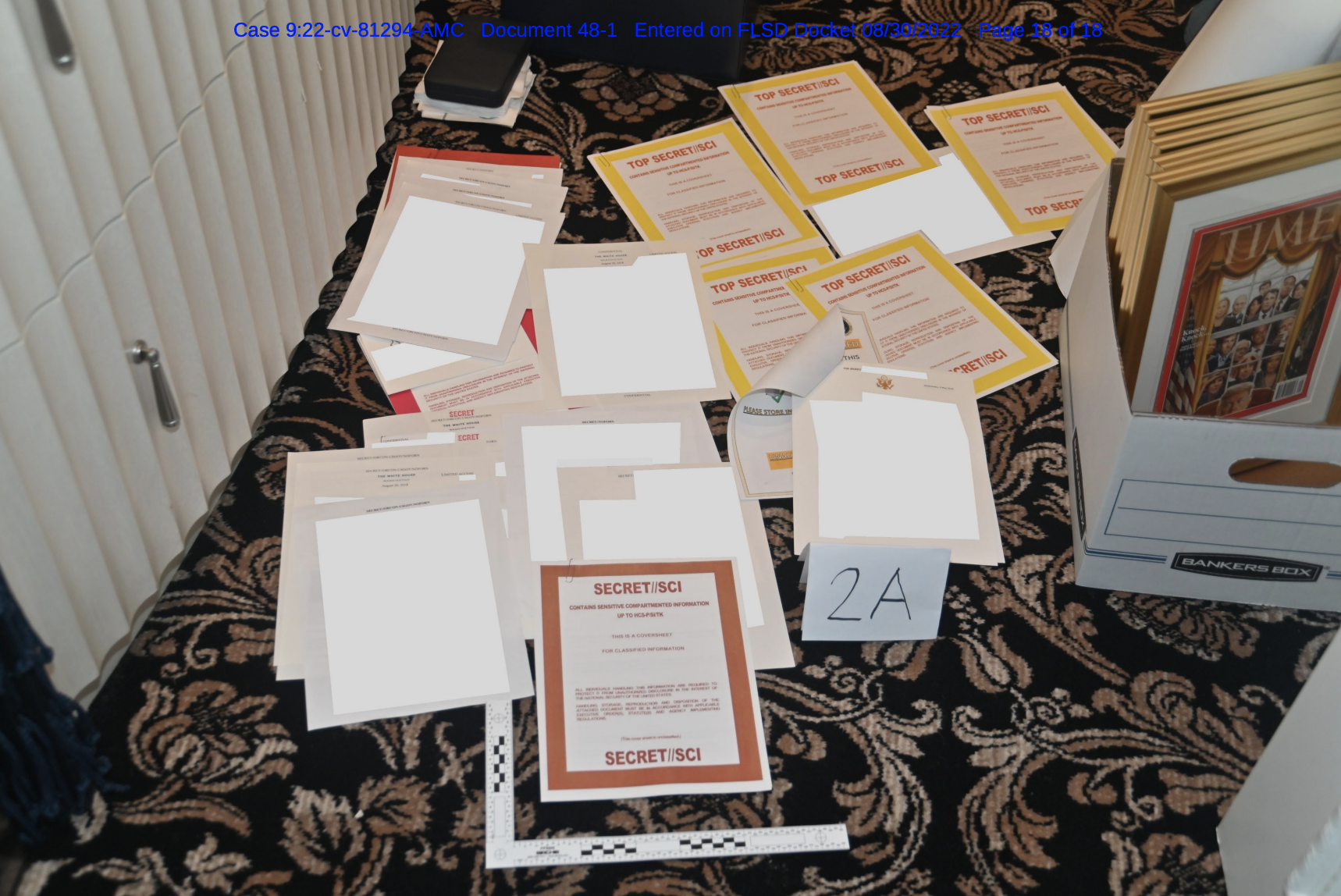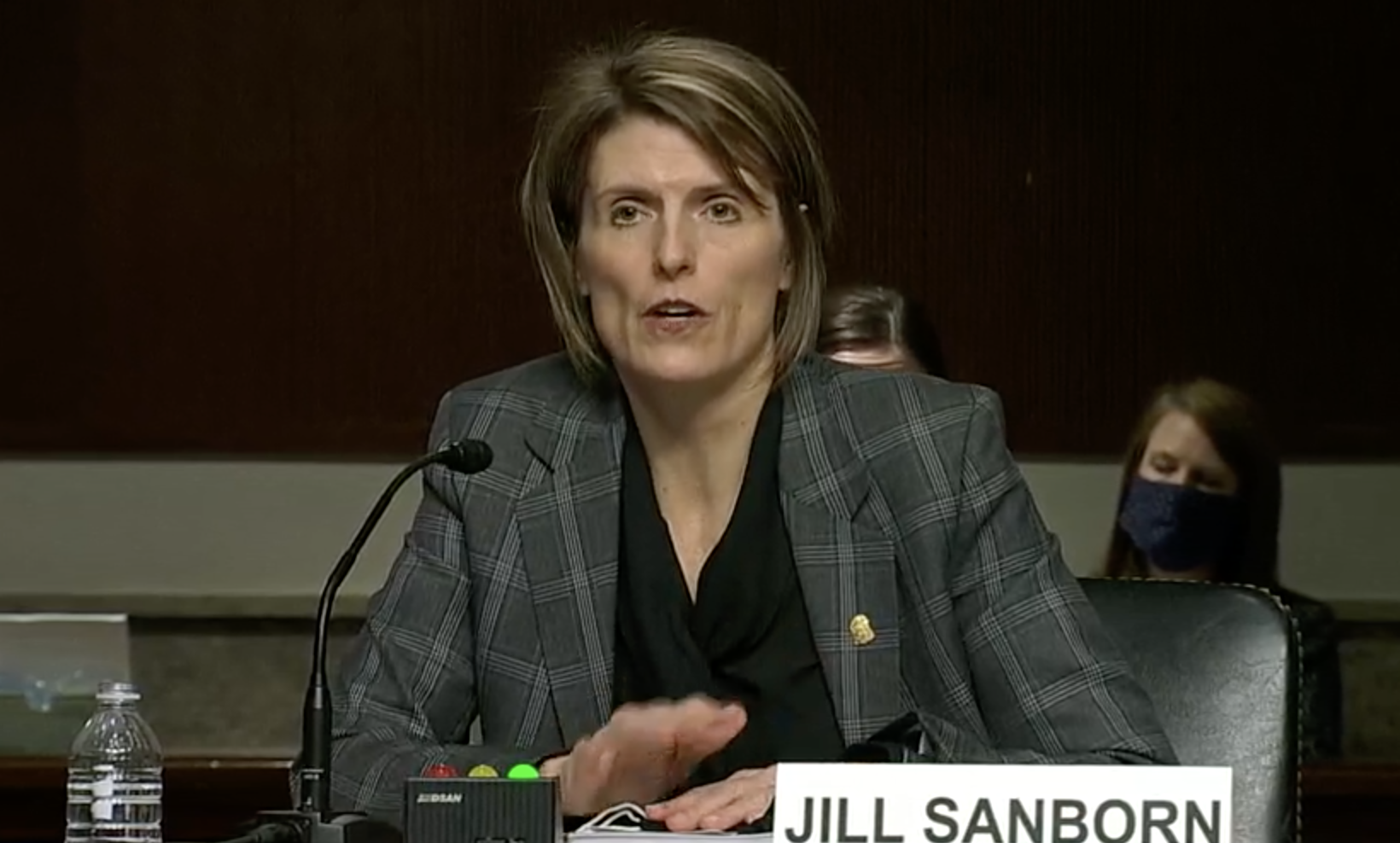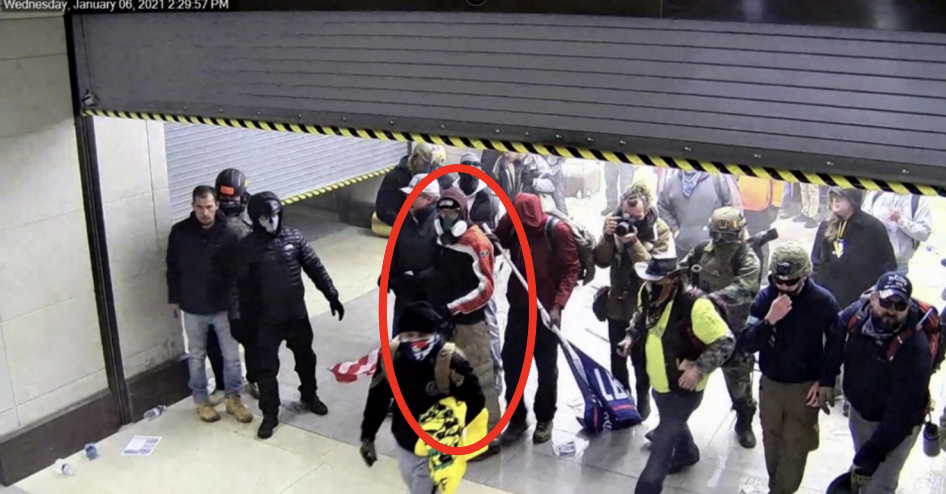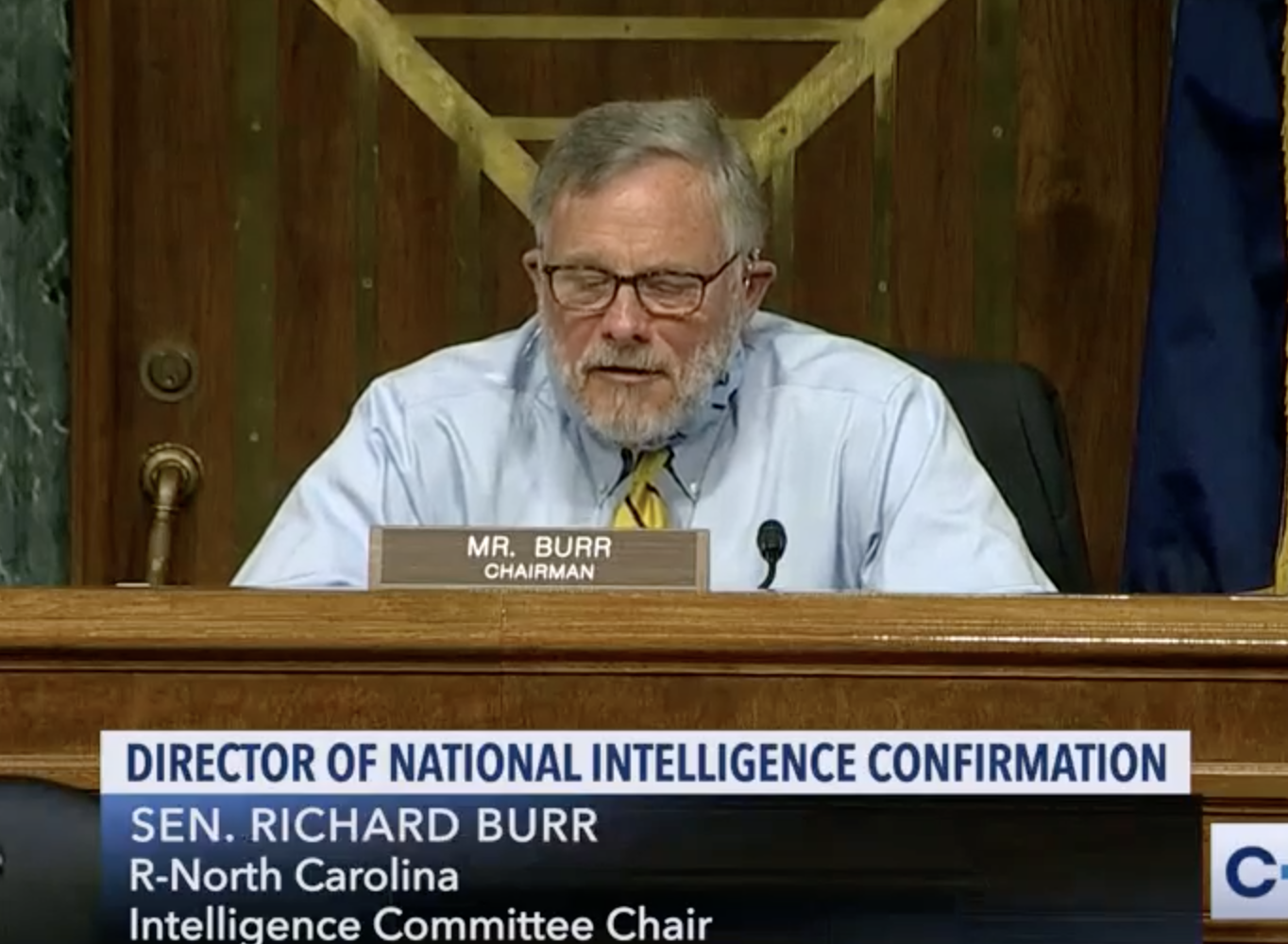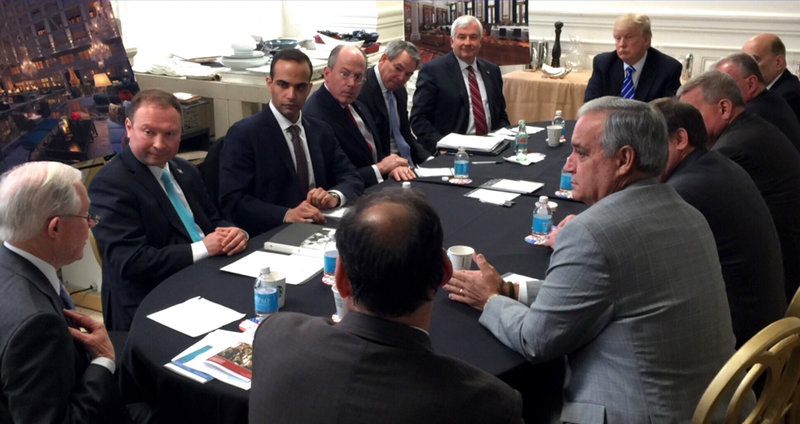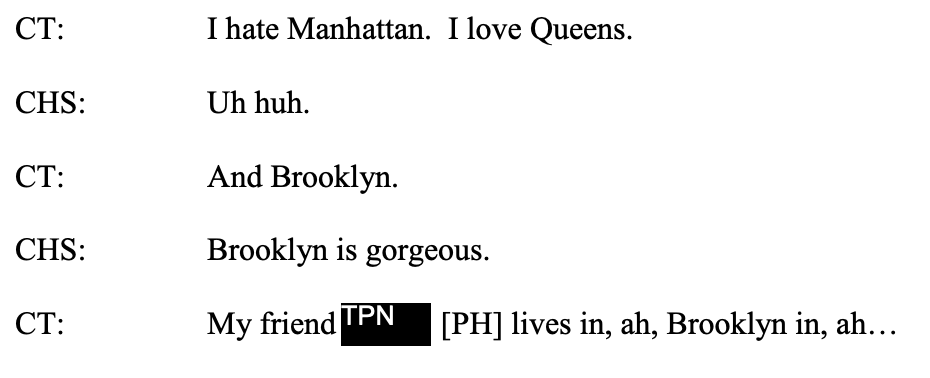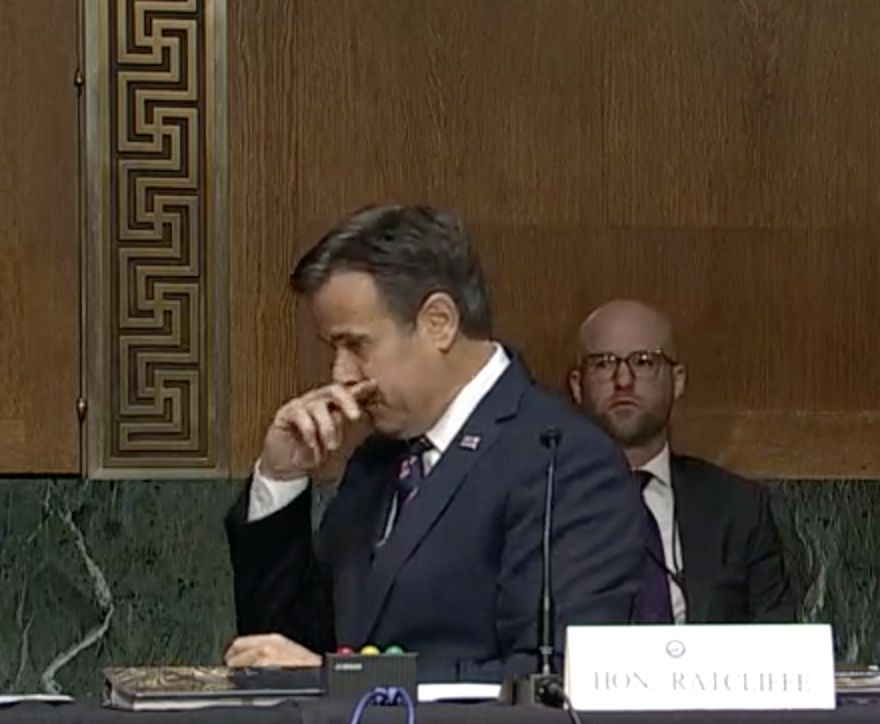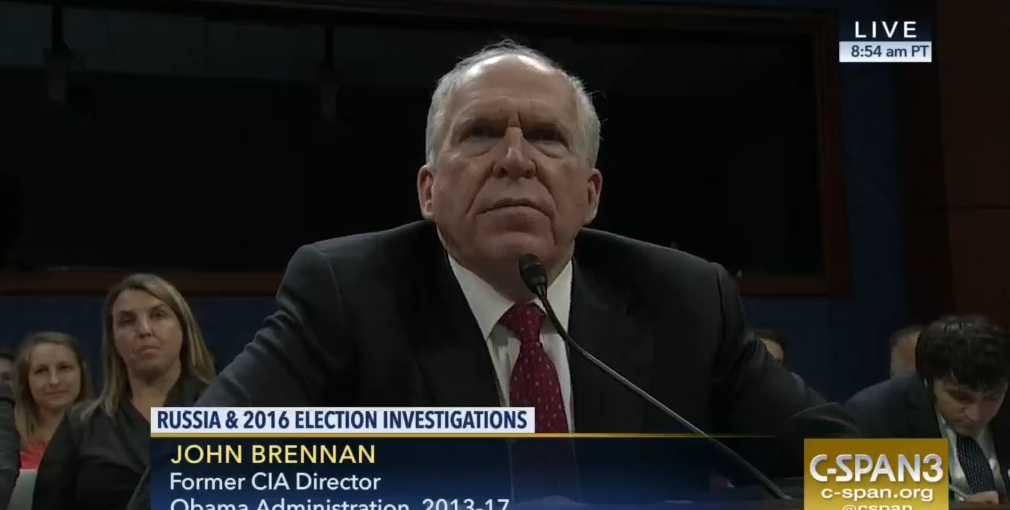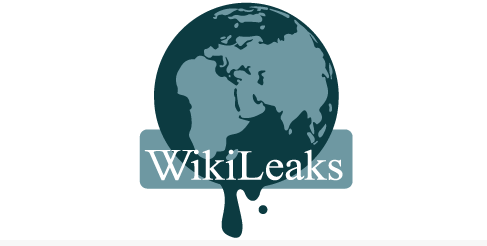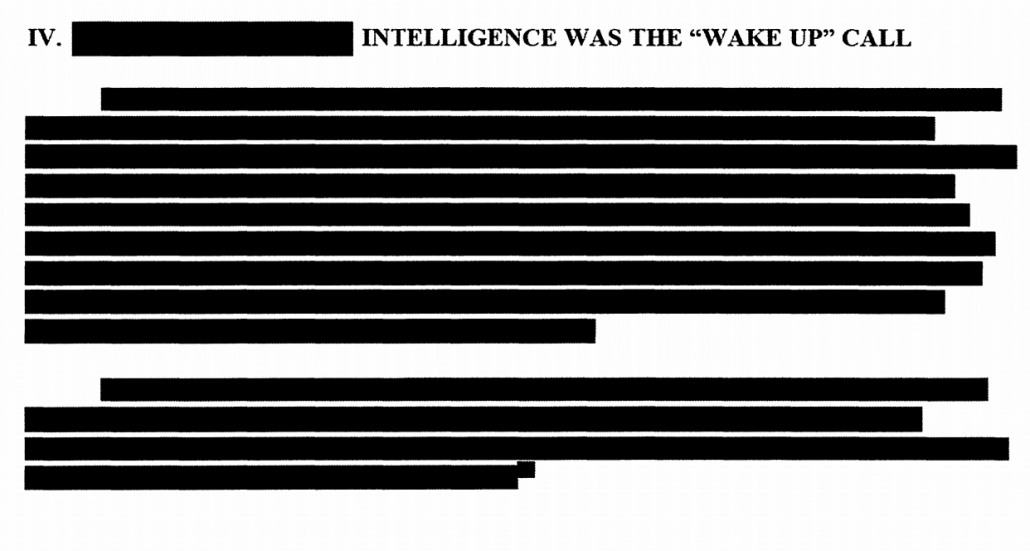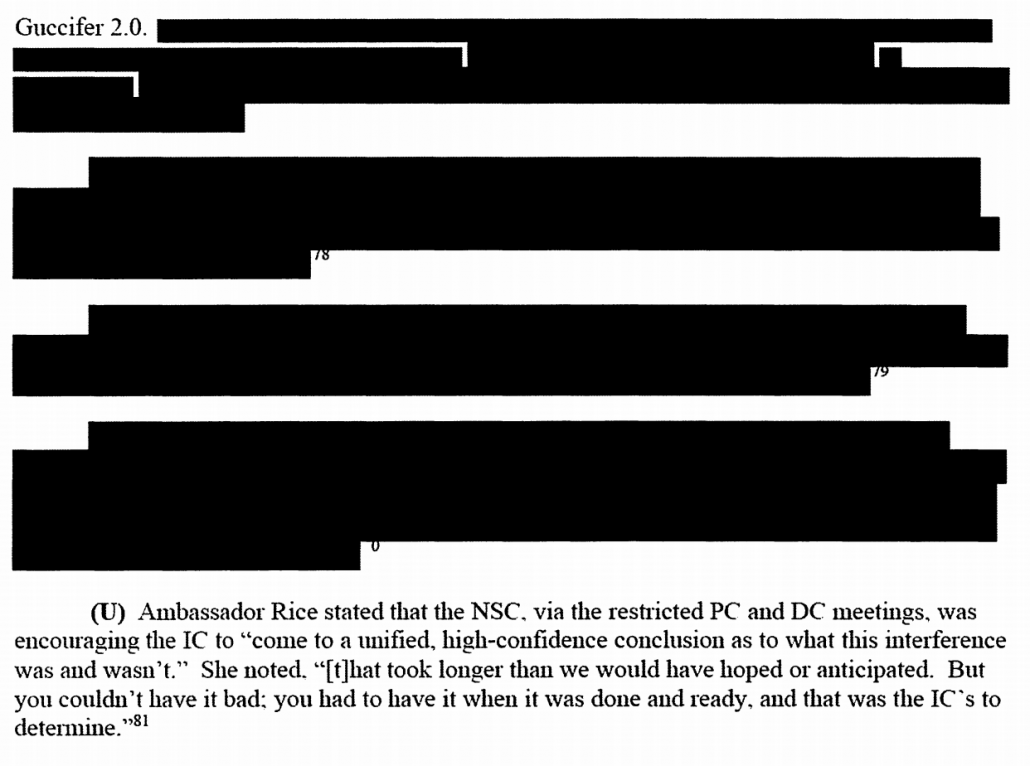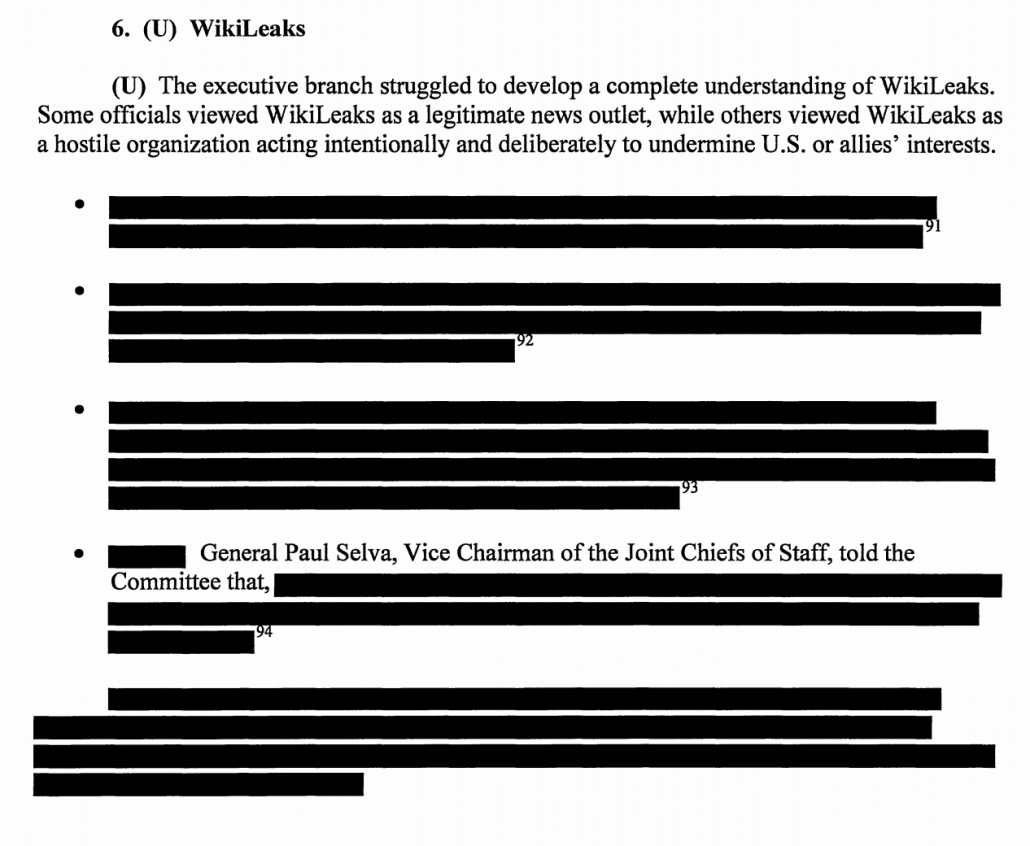“Lock Him Up!” Trump Calls on Congress to Halt the Criminal Investigation into Joe Biden
Yesterday, four Trump lawyers sent House Intelligence Chair Mike Turner a really risky letter. CNN first reported on the letter.
Boris Epshteyn, who had allegedly been leading Trump’s defense in that investigation, did not sign the letter.
The letter responds to the news that Turner and other Gang of 8 members have recently been given access to the documents found at Donald Trump, Joe Biden, and Mike Pence’s properties.
We understand that DOJ is making the documents marked classified available for your review, and this letter provides the Committee with information that we suspect DOJ has not disclosed to it.
It doesn’t cite its source of information about those reviews, which is one way to obscure that the Gang of 8 actually began to get such access by April 11, two weeks ago.
Since Mike Turner and other Gang of 8 members started reviewing the documents, two things have happened.
First, Joe Biden announced his reelection campaign, without waiting on Special Counsel Robert Hur to report the results of his investigation into Biden for mishandling classified information.
And, about a month after Evan Corcoran testified in a crime-fraud excepted appearance before the grand jury, Boris Epshteyn spent two days last week chatting with Jack Smith’s prosecutors. (Like Epshteyn, Corcoran did not sign this letter, but that’s because his partners forced him to recuse from the investigation after he testified.) Even though Epshteyn has been a likely source for a lot of the press reports on the various investigations into which he has or had visibility, I’m not aware of any report describing his testimony, much less why he testified without any report of a subpoena.
Contemplate the significance of the first item — Biden’s reelection announcement — as you consider the purported point of the letter. Donald Trump — the guy who won the presidency with non-stop chants of “Lock her up!” in 2016 — claims to think that an investigation analogous to the one that targeted Hillary Clinton in 2015 to 2016 is improper.
A legislative solution by Congress is required to prevent the DOJ from continuing to conduct ham-handed criminal investigations of matters that are inherently not criminal.
[snip]
What is consistent in all three of these cases is that the document handling procedures in the White House are flawed and DOJ is not the appropriate agency to conduct investigations pertaining to the mishandling or spillage of classified material.
Conclusion
The solution to these issues is not a misguided, politically infected, and severely botched criminal investigation, but rather a legislative solution. DOJ should be ordered to stand down, and the intelligence community should instead conduct an appropriate investigation and provide a full report to this Committee, as well as your counterparts in the Senate. Armed with the appropriate knowledge, we respectfully suggest that your Committee hold hearings and make legislative changes to:
1. Correct classified document handling procedures in the White House;
2. Standardize document handling and storage procedures for Presidents and Vice Presidents when they leave office; and
3. Formalize procedures for investigations into the mishandling or spillage of classified material, to prevent future situations where DOJ is inappropriately assigned to conduct an investigation.
President Trump’s legal team would be happy to meet with you or your staff to assist in any way necessary to address these issues. Please know that despite the differences in the cases, we do not believe that any of these three matters should be handled by DOJ as a criminal case. Rather, the stakeholders to these matters should set aside political differences and work together to remediate this issue and help to enhance our national security in the process. [my emphasis]
Donald Trump is asking Congress to intervene to halt not just into the investigation into him — and make no mistake, that is what he’s doing. But he’s also asking Congress to halt the investigation into his opponent!
Having won the presidency in 2016 by demanding the investigation into Hillary be more punitive, he’s now asking Congress to halt the investigation into Joe Biden.
Having won the presidency in 2016 by succeeding in highlighting Hillary’s negligence for mishandling classified information, Trump now wants to forego the opportunity to pursue the same approach in 2024.
At the very least, that’s a pretty good sign that he and his lawyers don’t believe their own claims that the known facts about Biden’s mishandling of classified information are worse than the known facts about Trump’s.
4 Of course, we also recently learned from media reports that President Biden possessed
marked documents in a “personal” folder at the Penn-Biden Center – strong evidence
that he intentionally possessed then after he or someone else secretly removed them,
from the Senate SCIF at least 14 years earlier when he was the Senator from Delaware.
We also now know that after DOJ learned about President Biden’s possession of
classified documents at the Penn-Biden Center, it allowed his personal attorneys to
search for and collect documents from his residence in Delaware making the specific
locations of the documents in the residence difficult, and perhaps impossible, to
determine. And, it has since been publicly reported that there could be even more
classified documents in the 1,850 boxes that Mr. Biden shipped to the University of
Delaware in 2012. https://www.cnn.com/2-23/02/15/politics/biden-delawaresearch/index.html. DOJ’s reaction to all of this is stunningly different from how it
responded to President Trump’s offer of cooperation regarding the boxes stored at Mara-Largo. [sic: Trump’s lawyers misspell Mar-a-Lago in several different ways in the letter][snip]
When documents were found in President Joseph Biden’s Penn-Biden Center office, despite clear indicators that his violations were more likely the result of willful misconduct, DOJ treated him very differently by forgoing any attempts at manufacturing conflict, while implicitly approving the spoliation of evidence.
The applicable criminal statute prohibits “willful retention” of national defense information, not mere possession. See 18 U.S. § 793 (e). To prove willful retention, a prosecutor must first establish that the possession was knowing. Despite media spin to the contrary, this is the key element that distinguishes President Trump’s retention of documents from that by President Biden. Evidence of knowing possession can be readily inferred from the length of time that President Biden possessed the marked documents since leaving office and the fact that they were moved and stored at multiple locations. In comparison, the materials found at Mar-a-Lago were still stored in the same GSA boxes in which they left the White House, untouched in the relatively short time since the end of President Trump’s term. Perhaps the most damning fact for President Biden is that he possessed marked documents from his time in the Senate—a body that maintains all marked documents in a SCIF, unlike the White House. Further, as you are no doubt aware and as mentioned earlier in this letter, media reports have indicated that classified documents were contained in a folder labeled “personal,”8 which is much more powerful evidence of knowing retention than documents being randomly dispersed into boxes by moving teams.
8 See, e.g., Jamie Gangel et al., “Exclusive: U.S. intelligence materials related to Ukraine, Iran and UK found in Biden’s private office, source tells CNN,” CNN (Jan. 10, 2023), https://www.cnn.com/2023/01/10/politics/biden-classified-documents-iran-ukraineunited-kingdom-beau-funeral/index.html.
There is not a chance in hell that Trump would forgo an opportunity to make this race about Biden’s mishandling of classified information if he really believed that Biden’s “violations were more likely the result of willful misconduct.”
Not a chance in hell!
But then, there’s abundant reason to believe that the four lawyers know they’re blowing smoke (to Congress). Heck, I’m so sure of it I think Mark Warner should invite all four of them to give sworn testimony to the Senate Intelligence Committee.
There are the claims this letter makes that conflict with known testimony, such as that Trump didn’t review any of the documents in the boxes ultimately returned to the Archives.
However, due to other demands on his time, President Trump subsequently directed his staff to ship the boxes to NARA without any review by him or his staff.
There are the claims this letter makes that conflict with known details about the case, such as that, because Trump was too busy starting an insurrection, he didn’t have the ability to send his documents to a GSA-leased facility.
When President Trump left office, there was little time to prepare for the outgoing transition from the presidency. Unlike his three predecessors, each of whom had over four years to prepare for their departure upon completion of their second term, President Trump had a much shorter time to wind up his administration. White House staffers and General Service Administration (“GSA”) employees quickly packed everything into boxes and shipped them to Florida. This was a stark change from the standard preparations made by GSA and National Archives and Records Administration (“NARA”) for prior administrations. As NARA acknowledged in a Press Statement it issued on October 11, 2022:
The National Archives and Records Administration (NARA), in accordance with the Presidential Records Act, assumed physical and legal custody of the Presidential records from the administrations of Barack Obama, George W. Bush, Bill Clinton, George H.W. Bush, and Ronald Reagan, when those Presidents left office. NARA securely moved these records to temporary facilities that NARA leased from the General Services Administration (GSA), near the locations of the future Presidential Libraries that former Presidents built for NARA. All such temporary facilities met strict archival and security standards, and have been managed and staffed exclusively by NARA employees.2
Investigators paid by the lead writer of this letter, Tim Parlatore, found two additional documents with classification marks in what is reportedly a GSA-leased facility in Florida.
Lawyers for Donald Trump found at least two items marked classified after an outside team hired by Trump searched a storage unit in West Palm Beach, Fla., used by the former president, according to people familiar with the matter.
[snip]
Emails released by the General Services Administration, which assists former presidents during their transition to private life, show that the government agency helped rent the storage unit at a private facility in West Palm Beach on July 21, 2021. The unit was needed to store items that had been held at an office in Northern Virginia used by Trump staffers in the months just after he left office.
There’s the claim that DOJ dictated the timing of the June 3 document pick-up, when the record shows Evan Corcoran called FBI and told them to come down the next day.
Ultimately, President Trump’s legal team complied with DOJ’s demands, performing as diligent a search as they could by Mr. Bratt’s arbitrary deadline, and submitted a certification that affirmed the same.
And this letter repeats a bullshit claim that Trump’s lawyers have chanted from the start of his attempts to sucker the press: that the only thing Jay Bratt requested after he had seen the storage room at Mar-a-Lago was to put a lock on the facility.
Although Mr. Corcoran told the DOJ representatives that they were not going to go through boxes together that day, he fully expected DOJ to ask to return to Mar-a-Largo and examine all the boxes. Mr. Bratt reinforced this belief when, five days later, he wrote to Mr. Corcoran requesting that an additional lock be placed on the door. The lock was soon installed, and the boxes kept under lock and key in a facility guarded by armed Secret Service agents.
It’s like Tim Parlatore thinks Mike Turner’s staffers are too stupid to review the unsealed affidavit, which reveals that Bratt’s letter says something else entirely: that the storage facility is not a secure facility authorized to store classified documents.
As I previously indicated to you, Mar-a-Lago does not include a secure location authorized for the storage of classified information. As such, it appears that since the time classified documents (the ones recently provided and any and all others) were removed from the secure facilities at the White House and moved to Mar-a-Lago on or around January 20, 202 1, they have not been handled in an appropriate manner or stored in an approptiate location. Accordingly, we ask that the room at Mar-a-Lago where the documents had been stored be secured and that all of the boxes that were moved from the White House to Mar-a-Lago (along with any other items in that room) be preserved in that room in their current condition until further notice.
Because the staffers that deal with this document have security clearance they surely want to keep, they’ll undoubtedly know that this is a reference to CFR standards for storage, not a request to add an almost certainly non-compliant lock.
And that’s why I think this letter was ill-advised.
These are just the obvious, affirmatively false things in the letter. There’s a whole bunch more that Trump’s lawyers simply ignore, such as the surveillance video showing Trump’s staffers moving boxes out of the storage facility in advance of the search they’re claiming here was a diligent search or the fact that FBI found 70-some classified documents in the storage facility of which Corcoran had claimed to have done a diligent search.
The only way this document could have the desired effect is if Mike Turner likes being lied to, or is so in the tank that — like Richard Burr before him — he’s willing to risk his own legal exposure to obstruct a criminal investigation.
And that’s assuming Warner didn’t subpoena any or all of these lawyers to repeat these farcical claims to Congress under oath.
All that’s before you consider the asymmetry. Trump’s lawyers — just one of whom (they admit) actually has clearance — acknowledge they have no fucking clue what FBI caught Trump hoarding.
Despite our requests to DOJ, it has refused to tell us whether in its judgment any of the documents remain classified. Similarly, DOJ has refused to allow for inspection of the documents at any time during the last eight months despite the fact that one of our attorneys has sufficient clearance to view the majority of the documents marked as classified.
Mike Turner does know.
Trump’s lawyers claim — or rather confess — that among the files he originally had in his beach resort were call briefings with foreign officials, just like the ones hidden from Congress in the first impeachment.
The vast majority of the placeholder inserts refer to briefings for phone calls with foreign leaders that were located near the schedule for those calls.
Again, I can only imagine how stupid Parlatore thinks Turner’s staffers are to confess this.
But even I know that many of the things Trump kept after DOJ subpoenaed them are not similar. Even I know that Trump compiled two classified documents with messages from a pollster, a book author, and a faith leader. And Mike Turner has reviewed these documents and he knows it too. And I know that he knows it.
So unless Mike Turner is totally in the tank for Trump — worse even than Burr was! — this letter risks pissing Turner off.
Last month, before Evan Corcoran was forced to give crime-fraud excepted testimony against Trump and before Boris Epshteyn spent two days chatting with Jack Smith’s prosecutors, Tim Parlatore — lead author of this insulting letter — said the following about Epshteyn’s role in the stolen documents case.
Mr. Epshteyn’s legal role with Mr. Trump, while less often focused on gritty legal details, has been to try to serve as a gatekeeper between the lawyers on the front lines and the former president, who is said to sometimes roll his eyes at the frequency of Mr. Epshteyn’s calls but picks up the phone.
“Boris has access to information and a network that is useful to us,” said one of the team’s lawyers, Timothy Parlatore, whom Mr. Epshteyn hired. “It’s good to have someone who’s a lawyer who is also inside the palace gates.”
Mr. Parlatore suggested that he was not worried that Mr. Epshteyn, like a substantial number of other Trump lawyers, had become at least tangentially embroiled in some of the same investigations on which he was helping to defend Mr. Trump.
“Absent any solid indication that Boris is a target here, I don’t think it affects us,” Mr. Parlatore said.
Neither Corcoran nor Epshteyn signed this letter. It’s not yet clear why Epshteyn didn’t.
And that’s as telling as the embarrassing false claims that it makes.

